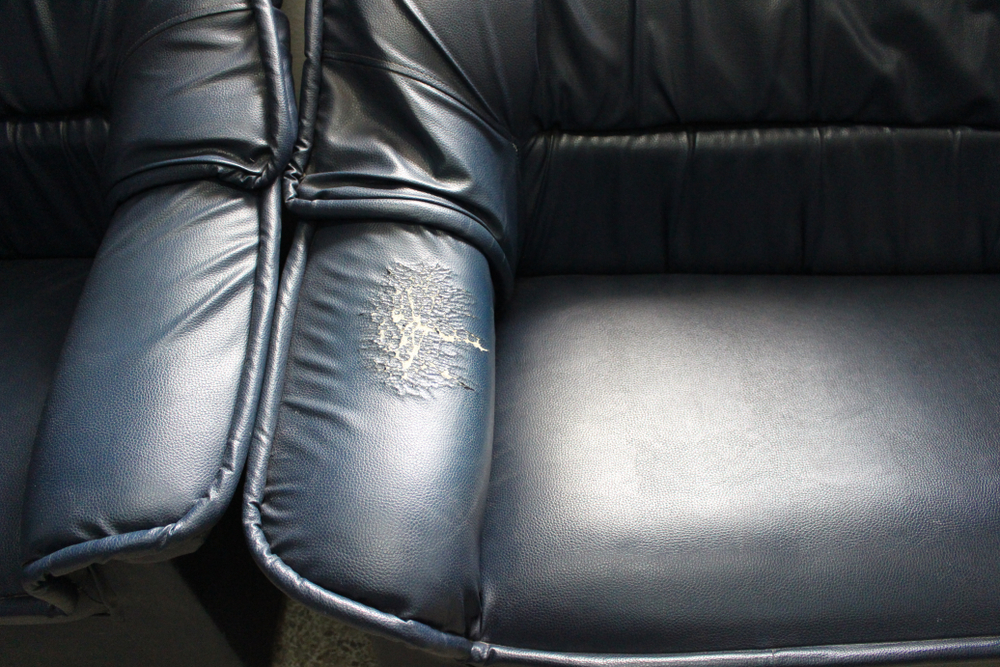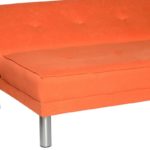As with most pieces of furniture, leather couches tend to become worn the older they get. The more leather gets used, the higher chance there will be of peeling.
Unfortunately, once the leather begins to peel, the situation can get much worse over time. That is unless you step in and slow down the process.

It can be quite difficult to fix a peeling leather couch. However, while you may not be able to completely stop the leather from peeling, you can slow the rate at which it peels.
Leather couches tend to be pretty expensive. Therefore, you want your sofa to have a long lifespan. This is why it’s important to tackle the peeling process early on.
If you love your leather furniture, it’s vital that you learn how to fix a peeling leather couch. Although called leather couches, most are mixed with plastic, and resin is applied to the external area of the leather.
Trying to find out the difference between real and fake leather can be nigh on impossible. However, genuine high-quality 100% leather generally does not peel but most leather sofas are combined with other elements.
With this mixture of materials, a leather couch will start to peel after several years, no matter how careful you are with it. Although it is not easy to fix peeling leather, there are some methods that could help your problem.
Continue reading to find out the best ways to tackle a peeling leather sofa so you can get a few more years out of your beloved couch yet.
How to fix a peeling leather couch
It’s important to repair your leather couch as soon as it starts peeling. This will give you the best opportunity to slow down the process. Luckily, every problem has a solution! Below is a step-by-step guide to help you restore your leather couch to its former glory.
Step 1
Collect supplies
You will have to gather some supplies in order to complete this process. Firstly you will need:
- A leather and vinyl repair kit - You should be able to purchase this from your local hardware store.
- Scissors - A little grooming scissors is best as a larger type can become uncomfortable to use and could damage the couch.
- A lint-free piece of cloth - This is used to clean the couch.
- A tweezer - For holding down areas of fabric.
- A toothpick - To help you hold and move certain areas of leather into position.
Step 2
Cut away the peeling portion of the leather
Once you have collected the necessary items, you will have to pick up your scissors and cut away the damaged area from your leather couch. Yes, this seems drastic and risky but this is vital in restoring your sofa to its heyday.
Once you have carefully cut away the damaged area, you must clean the space. Using your lint-free cloth, wipe over the cut-out portion. You can wet the cloth beforehand if you suffer from a dust allergy. This will prevent any small dust particles from polluting the air as you work.
Step 3
Prepare backing fabric from your leather and vinyl repair kit
Within your leather and vinyl repair kit, you should find some backing fabric. This is needed to replace the cut-away leather and cover the damaged portion of the couch.
If you do not have any backing fabric, you can use upholstery batting as a substitute. This is made with polyester and is the next best thing for fixing peeling leather sofas.
You must cut the fabric before applying it to the couch. You should measure the damaged area and then cut the backing fabric according to these measurements.
Be sure to leave around 1-centimeter of extra space on the backing fabric compared to the damaged area’s measurement. This is so it will fully cover the area.
Step 4
Insert the backing fabric in the damaged portion of the couch
Grab ahold of your tweezer and hold back the fabric with it. Now place the fabric onto the damaged area. Next, tuck the corner of the backing fabric into the damaged portion with a toothpick. The toothpick should have come with the leather and vinyl kit, too.
Step 5
Apply vinyl adhesive to your backing fabric
A vinyl adhesive would have come with your repair kit. Apply this on the backing fabric and then wait a few hours. Depending on the instructions with the leather and vinyl repair kit and the amount of vinyl adhesive you use, it should take approximately 5 to 6 hours to fully set.
Once the adhesive is dry, the damaged area should already look better. The couch’s surface should appear and feel smoother than before.
Step 6
Mix Paint to cover the damaged area
Some leather and vinyl repair kits come with a guide on what colors you should mix to get the correct color for your leather. If you’re not sure what color to apply, then don’t apply it! Try a few colors on a piece of vinyl at first before you paint over your actual couch.
Once you have tested the paint and are happy and confident with the color, you can go ahead and paint over the repaired area.
Make sure that you apply the paint on the edges. This is so the new fabric doesn’t stand out from the rest of the sofa. If the color is matching well, continue with the painting process.
Although the color won’t be an exact match, you should be able to get as close to the original leather hue as possible.
Once you have covered the damaged area in paint, wait for it to dry for a few hours. Then, inspect it once more. It may need a few coats before it is safe to use. Once painted, your leather couch should be smooth and ready for more life once again!
In Summary
If in doubt or you’re worried about taking a risk with your couch, hire a professional. But the DIY method will cost you less and it can be very fulfilling to see your dependable peeling sofa look ten years younger thanks to your own hand.






